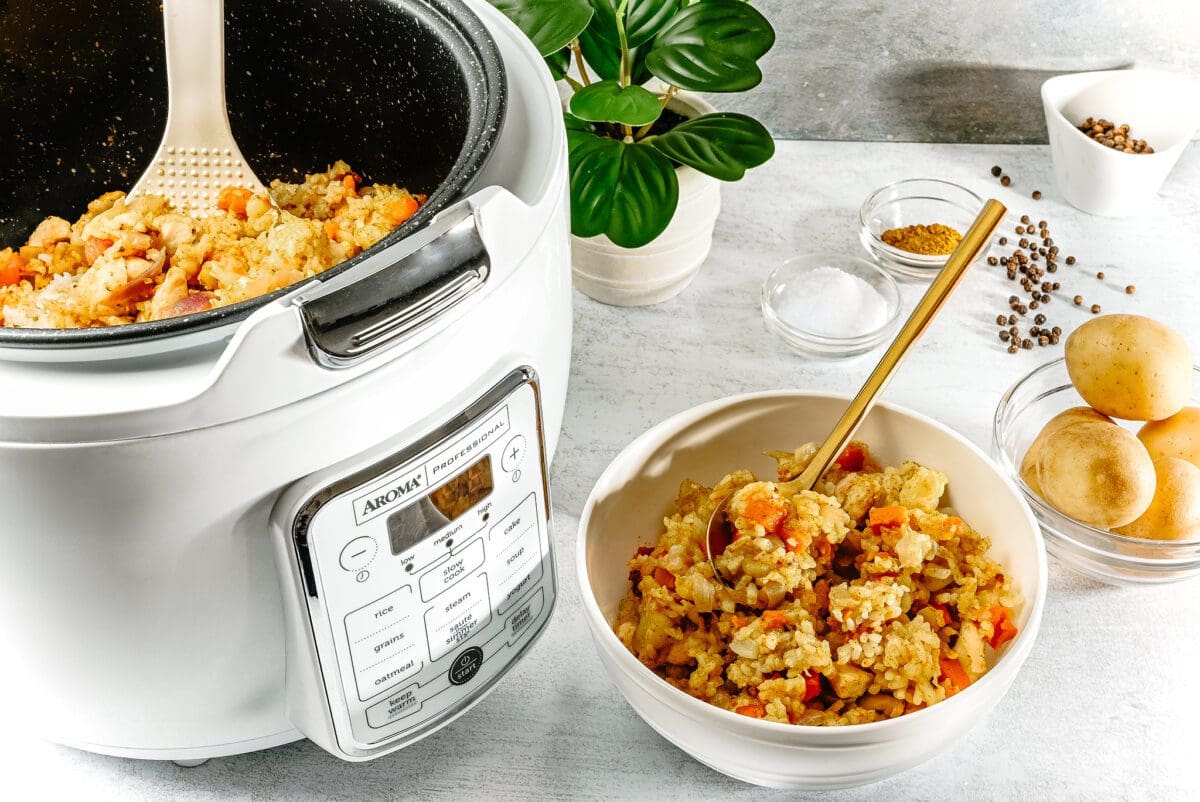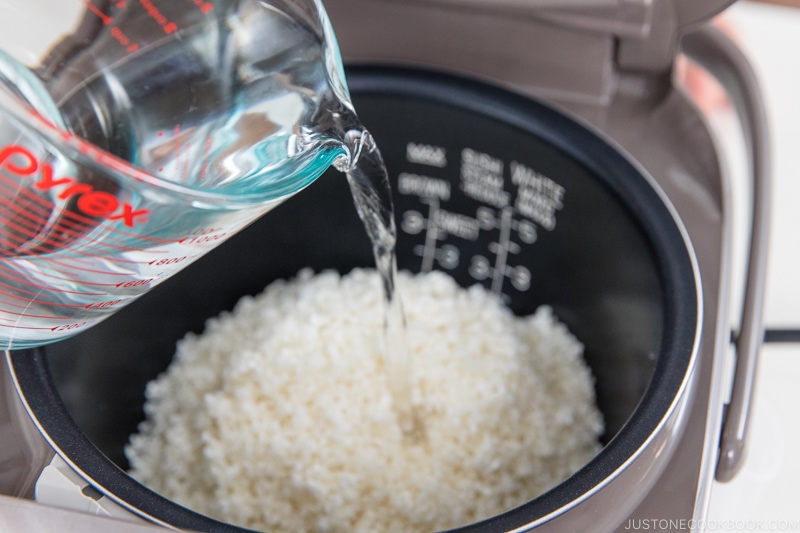How to Cook Konjac Rice with a Rice Cooker: A Comprehensive Guide for Healthy Eating
Written By James Morgan
Cooking konjac rice can appear to be a daunting task, especially for those unfamiliar with this extraordinary low-carb alternative. For those striving to maintain a healthy lifestyle or adhere to a specific diet like keto, learning how to cook konjac rice with a rice cooker can be a game-changer. This article is crafted to help you master this skill, guiding you through every step and offering useful tips along the way.

What is Konjac Rice?
Konjac rice, also known as shirataki rice, is derived from the konjac plant, which is native to parts of Asia. This plant's root is ground into flour, then shaped into rice-like grains or noodle forms. Konjac rice is celebrated for its low carbohydrate content, making it an ideal addition to diets aiming to reduce carbs, such as keto or diabetic diets. Despite its resemblance to regular rice, konjac rice offers a significantly lower calorie count and is packed with dietary fiber.
:max_bytes(150000):strip_icc()/make-sticky-rice-in-rice-cooker-3217199-hero-02-90beca8ebad94497a1d5cc941d52fa1c.jpg)
Why Use a Rice Cooker?
The convenience of a rice cooker cannot be overstated. This kitchen gadget simplifies the process, ensuring that your rice comes out perfectly cooked every time with minimal effort. When you learn how to cook konjac rice with a rice cooker, you'll find that it not only saves you time and energy but also maximizes the taste and texture of the rice. Most rice cookers come with different settings and features that are customizable based on the rice type you're cooking, making them versatile tools in any kitchen.

Ingredients and Equipment
- 1 cup of dried konjac rice
- 2 cups of water
- Pinch of salt (optional)
- Rice cooker
- Knife set
- Cutting board

Step-by-Step Guide: How to Cook Konjac Rice with a Rice Cooker
Cooking konjac rice perfectly can be achieved by closely following these steps. Each step is crucial in ensuring the rice is cooked to its optimal consistency and flavor.
Step 1: Preparing the Rice
This preparatory step sets the foundation for perfectly cooked konjac rice. Begin by rinsing the dried konjac rice under cold water for a few minutes. The rinsing process helps to remove any excess residue from the konjac flour, which can affect the texture and taste of the cooked rice. Using a fine-mesh strainer can be particularly helpful to prevent the small grains from washing away.
Step 2: Setting Up the Rice Cooker
Select a quality rice cooker that allows for different settings. Ensure the rice cooker is clean and ready to use. Pour the rinsed konjac rice into the rice cooker's inner pot. Add two cups of water; this ratio typically works well for konjac rice, but you can adjust based on your texture preference. Some people prefer a slightly firmer texture and may use less water.
Step 3: Adding Flavor
If you wish to enhance the flavor of your konjac rice, you can add a pinch of salt or even a few drops of a light broth. This step is optional but recommended for those who appreciate a bit of depth in their rice dishes. Stir a bit to ensure the salt or broth is evenly distributed. Close the rice cooker's lid securely before moving on to the next step.
Step 4: Cooking the Rice
Select the appropriate setting on your rice cooker. Most modern rice cookers have settings for various types of rice. For konjac rice, the standard white rice setting is usually appropriate. Press 'start' and allow the rice cooker to work its magic. Cooking time may vary depending on the rice cooker model, but it typically takes about 10-15 minutes for konjac rice to be perfectly cooked.
Step 5: Letting the Rice Rest
Once the cooking cycle is complete, it's important to let the konjac rice rest in the rice cooker for an additional 5 minutes. This resting period allows the rice to absorb any remaining moisture, resulting in a better texture. Avoid opening the rice cooker immediately to prevent losing steam, which can make the rice dry.
Serving Suggestions for Konjac Rice
Konjac rice can be served in a variety of ways. Its a versatile ingredient that pairs well with numerous dishes, from stir-fries to curries. One popular serving suggestion is to use it as a base for your favorite vegetable stir-fry. Simply saut your choice of vegetables with some soy sauce and sesame oil, then mix them with the konjac rice for a nutritious and delicious meal. Another idea is to create a konjac rice bowl with your preferred protein, such as grilled chicken or tofu, topped with a vibrant array of veggies. For more delicious ideas, check out our Veggie Sushi Rolls and Paleo Sushi.
Konjac Rice: Health Benefits and Nutritional Value
One of the key reasons many choose to incorporate konjac rice into their diet is its impressive health benefits. Konjac rice is incredibly low in calories, making it a fantastic option for those aiming to lose weight or maintain a healthy weight. Its high fiber content helps promote digestion and can make you feel fuller for longer periods. Additionally, konjac rice is naturally gluten-free and fat-free, making it suitable for various dietary needs and restrictions.
Frequently Asked Questions About Konjac Rice
People often have many questions when they start cooking with konjac rice. One common query is whether konjac rice needs to be refrigerated. The answer is yes; once the package is opened, it's best to store konjac rice in the refrigerator to maintain its freshness. Another question is whether konjac rice can be frozen. Although it can be frozen, it's worth noting that freezing may alter its texture. It's generally recommended to consume it fresh for the best experience.
Common Mistakes to Avoid When Cooking Konjac Rice
There are several common mistakes to avoid to ensure your konjac rice is perfectly cooked every time. One major mistake is using too much water, which can result in mushy rice. Another is not rinsing the rice thoroughly before cooking, which can leave an unpleasant taste or texture. Lastly, opening the rice cooker's lid prematurely can cause the rice to dry out. By avoiding these mistakes, you can achieve optimal results and enjoy delicious konjac rice consistently.
Clean Up and Maintenance
After enjoying your meal, it's essential to clean your rice cooker and other utensils properly. Regular maintenance not only ensures they last longer but also keeps them in excellent working condition. Begin by unplugging the rice cooker and letting it cool completely. Wash the inner pot and removable parts with warm soapy water. Using a gentle cookware cleaner can help remove any stuck-on residue without damaging your rice cooker. For your cutting board, apply cutting board oil after washing to maintain its quality and prevent cracking.
As an Amazon Associate, I earn from qualifying purchases.



